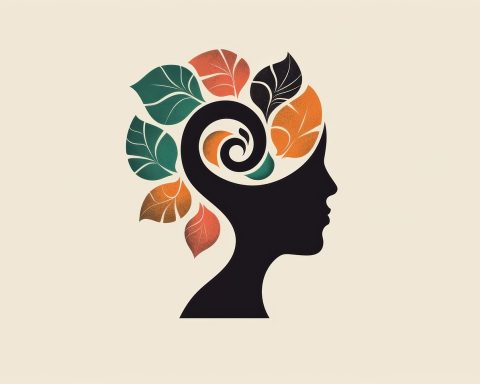The most common illicit drug in use in the United States today is marijuana. And, although a number of states have now legalized its use, either for medicinal or recreational purposes, it is still illegal in many others. Even in those states where marijuana has been made legal, it is only for people over the age of 21.
A key concern is that, just like with alcohol, the legal age limit will not be able to prevent young people from getting a hold of the drug and using it.
Teens and adolescents are especially vulnerable to marijuana abuse. Research has shown that using cannabis from a young age often disrupts the development of the brain, causing permanent brain damage in teenagers.
The Effects of Marijuana on the Body
When used in medical settings, marijuana can bring relief to many patients who have a host of health conditions, including pain, nausea, and seizures.
For those people, using medicinal cannabis improves their qualities of life. However, the compound used in most of these cases is cannabidiol (CBD), a component of cannabis that does not produce any psychoactive effects. Recreational users, on the other hand, use THC-dominant (tetrahydrocannabinol) strains that, in many cases, have negative outcomes.
When used in the short term, marijuana can impair many brain functions, including attention span, decision-making ability, learning, and memory.
The effects may last for several days once the high has passed and using marijuana for prolonged periods during youth has been associated with low grades, a high school dropout rate, and a greater reliance on welfare programs, as well as a poor quality of life.
How Does Marijuana Affect the Teenage Brain?
Although there are limited studies over the long term that follow the effect that marijuana has on teens and young people, some emerging research has shown a worrying outcome for people who begin using marijuana at an early age.
A study carried out by a psychologist from Duke University collected information from 1,000 people from New Zealand who were born in the early 1970s. They answered a number of questions with regard to their use of marijuana at several ages between 18 and 38. They also had neuropsychological tests when they were 13 and, again, at 38.
The results of the research showed that using marijuana persistently from an early age caused lower IQs, and those who had continued to use marijuana through three levels or more of the research had a neurological drop in function of six IQ points. (Meier, et al., 2012)
It is believed that younger people have a unique susceptibility to the effects of marijuana because their brains are still being constructed.
While going through adolescence, the teenage brain could well be at risk of incurring long-standing damage because of exposure to drugs.
The brain’s frontal cortex, the area responsible for making decisions, planning, judgment, and personality traits, remains immature until the individual has reached his or her early 20s.
Also, teenage subjects have an immature endocannabinoid system, and this system is responsible for physiological mechanisms that respond to the THC compound. The endocannabinoid system also regulates a number of high functions, including stress response, cognition, and regulation of emotions.
When the individual is exposed repeatedly or for prolonged periods to marijuana, his or her endocannabinoid system slows down its developmental and cellular activity. (Jacobus & Tapert, 2014)
The Brain After Using Drugs
There have been an increasing number of studies that show there could be evidence pointing to changes in the brains of teenagers who regularly use marijuana. (Lisdahl, Wright, Medina-Kirchner, Maple, & Shollenbarger, 2014)
Brain abnormalities and changed neurological activity have been found in teenagers who use cannabis chronically. And, evidence has shown that these changes start to occur immediately after a teen’s first encounter with the drug. Even after abstaining for a month, evidence of these changes remained in place.
Some of the abnormalities detected in the brain are linked with cognitive problems. In a study that looks at heavy and regular users of marijuana, damage was found in the white matter of the subjects’ brains. This area is responsible for the neural pathways of communication, and these changes were also linked to a greater impulsivity in behavior.
A further study that was carried out by Massachusetts General Hospital also showed that 18- to 25-year-olds who used marijuana once or more per week had changes in their brains in terms of volume, density, and shape of the gray matter found in the nucleus accumbens and amygdala – the parts of the brain linked to decision making and memory (Gilman, et al., 2014).
The Mental and Emotional Effects of Cannabis in Teenagers
In teenagers, marijuana doesn’t only affect physical health. It also affects mental health. Adolescents who use marijuana have two times more chance of developing conditions, such as depression and anxiety. And, those who are regular users, have three times more chance of experiencing suicidal thoughts when compared with teens who have never used the drug. (Greenblatt, 1998) Also, it has been found that teens who use marijuana have a greater chance of schizophrenia as they get older.
Overall, the parts of the brain that are responsible for making decisions, controlling emotions, and making judgments are still being developed in teenagers, and any exposure to cannabis, whether in large or small amounts, could well lead to an alteration in the functions and structures of their brains over time.
Researchers have started to see trends emerging in those teens who use marijuana regularly, including anxiety, depression, unemployment, and poor educational performance. It seems clear, then, that parents must do what they can to prevent their adolescent children from accessing marijuana for their own long-term well-being.
About The Author
Bibliography
Gilman, J., Kuster, J., Lee, S., Myung, J., Byoung, W., Nikos, M. d., et al. (2014). Cannabis Use Is Quantitatively Associated with Nucleus Accumbens and Amygdala Abnormalities in Young Adult Recreational Users. Journal of Neuroscience , 34 (16), 5529-5538.
Greenblatt, J. (1998). Adolescent self-reported behaviors and their association with marijuana use. Substance Abuse and Mental Health Services Administration (SAMHSA) .
Jacobus, J., & Tapert, S. (2014). Effects of Cannabis on the Adolescent Brain. Current Pharmaceutical Design , 20 (13), 2186-2193.
Lisdahl, K., Wright, N., Medina-Kirchner, C., Maple, K., & Shollenbarger, S. (2014). Considering Cannabis: The Effects of Regular Cannabis Use on Neurocognition in Adolescents and Young Adults. Curr Addict Rep , 1 (2), 144-156.
Meier, M., Caspi, A., Ambler, A., Harrington, H., Houts, R., Keefe, R., et al. (2012). Persistent cannabis users show neuropsychological decline from childhood to midlife. Proc Natl Acad Sci , 109 (40), E2657-2664.








